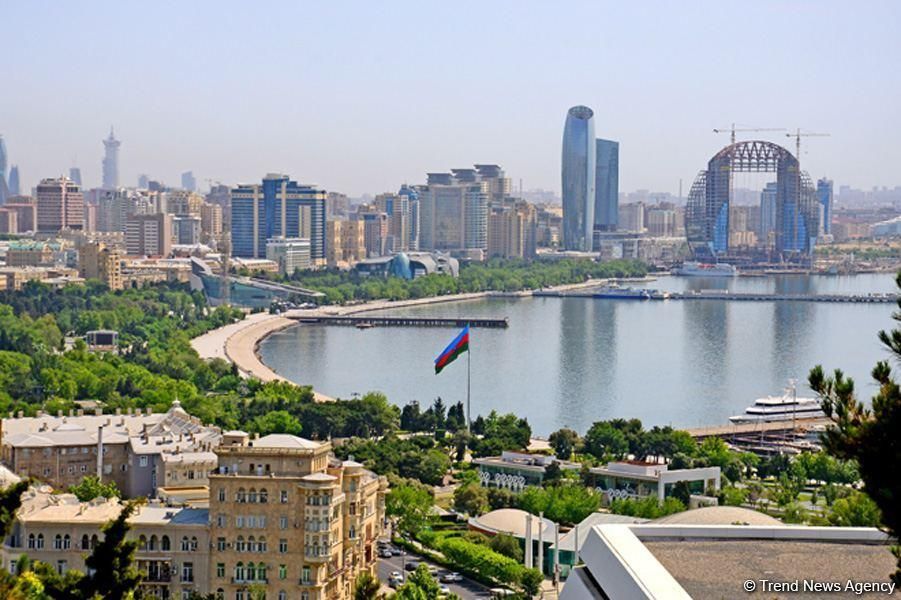Economic success story of South Caucasian Tiger - Azerbaijan

Fearing the economic potential and natural resources of Azerbaijan and the capabilities of Azerbaijanis, Russia integrated Azerbaijan to such an extent that the latter suffered from the collapse of the USSR more than other former union republics including Russia itself.
Despite the GDP per Capita in Azerbaijan in 1992, the first year of its independence had ramped down from $1,000 to $60, and the country had yet started to rebuild its economy in the South Caucasus, it could cope with a number of challenges causes by the effects of the collapse of the Soviet Union.
Besides, the unprovoked war declared by Armenia made the situation much harder. As a result of the war 20 percent of Azerbaijan which played an important role in the economy, especially in agriculture, was occupied and 750,000 people turned into IDPs. In addition, about half a million people of different origins who were expelled from Armenia or fled from civil wars in other Soviet Republics took shelter in Azerbaijan. Roughly every fifth or sixth person in a recently becoming independent country was either IDP or refugee. On top of all, the increase rate of population was high, and it is worth noting that the population has grown by 45 percent in the country for 30 years.
As a matter of course, all of the above-mentioned factors created a burden on the economy of the newly independent country and the inflation hit 1,662.22 percent. Azerbaijan was literally facing a formidable economic turmoil.
As the saying goes, after rain comes fair weather. In 1993, when the dire situation hit its bottom, the country witnessed a political crisis that ended in returning National Leader Heydar Aliyev to power. On the first day of Heydar Aliyev’s power, he had two big challenges - the war and the dire economic situation in the country. Needless to say that these two challenges relate to each other. A country suffering from economic and political crises hardly wins a war. Moreover, nobody is interested in investing in a country waging war. In other words, the country needed to take a break to breathe. Thus, under the determined efforts of the National Leader Azerbaijan and Armenia reached a ceasefire in May 1994, and after five months Azerbaijan signed the Contract of the Century with leading global oil companies.
Oil Strategy
The Contract covered the joint development and production sharing for the Azeri-Chirag-Guneshli fields in the Azerbaijani Sector of the Caspian Sea. The worth of the agreement amounted to $7.4 bn and 11 international oil companies representing seven countries were part of the contract.
For delivering growing Azerbaijani oil to the international markets new oil pipelines – Baku-Novorossiysk in 1997, Baku-Supsa in 1999, and Baku-Tbilisi-Ceyhan (BTC) pipelines were constructed. It should be mentioned that due to these pipelines Azerbaijan turned into an energy corridor.
As of the beginning of 2022, more than $41 billion has been invested in developing the "Azeri-Chirag-Gunashli" fields. The block produced 546 million tons of oil and more than 49 billion cubic meters of associated gas, which were handed over to the government of Azerbaijan.
On September 2017, the Contract of the Century was amended. According to the new contract, it extended until 2049, bp remained the project’s operator and SOCAR’s shares increased from 11 to 25.
The Benefits of Oil Contracts
Since Azerbaijan was a peripheral zones, neither the Russian Empire nor the USSR paid special attention to the infrastructure. Despite Azerbaijan being rich in carbohydrates, most of its parts were not gasified. The country was devoid of modern highways. Moreover, the country had electricity problems in the first years of its independence. Electricity production was not enough to provide all the country, generating and transmitting units were old-dated and needed to be renewed. No need to say, all these deficiencies impeded the development of the economy. Keeping all these in mind, Azerbaijan channeled some part of its revenues to infrastructure construction. As a result, over 90 percent of Azerbaijan was gasified and over 11,000 km of road was constructed till 2017.
Today, Azerbaijan's road infrastructure is considered the best among the former Soviet Republics. It is worth noting that road infrastructure played a significant role in Azerbaijan's victory in the 44-day war. Azerbaijan has built 34 power plants with a generation capacity of 3,400 megawatts over 20 years. For comparison, Azerbaijan’s total generation capacity is 7,200 megawatts.
Of course, the construction of this infrastructure triggered the economic growth playing out from tourism to agriculture, and the figures demonstrate it. Over 30 years, the GDP hiked by 176 times, ramping from $446m up to $78.7bn. It is worth noting that even the growth rate of the Chinese economy (42 times) lags behind Azerbaijan’s growth rate. As for GDP per capita in Azerbaijan, it has grown from $60 to $7,818.
The number of tourists visiting Azerbaijan increased by 34 times over 25 years, rising from 93,000 in 1995 to 3.17 million in 2019 before the COVID-19 pandemic. The increase rate of Turkiye was 6.7 times; France was 3.6 times; Greece was 3.4 times; Spain was 2.4 times; Italy was 1.7 times.
The increase rate of Azerbaijan does not overpass other countries only in tourism but in all sectors of the economy. Over 30 years, the trade turnover of Azerbaijan ramped up by 22 times. Export of Azerbaijan ramped up by 27 times, while the export of Turkiye increased by 13; Germany by 4.2; France by 3 times. Even according to the data of OEC world, the export of Azerbaijan exceeded Iran in 2020 and 2021. Over this period, Azerbaijan’s export per capita grew 17 times amounting to 3747 in 2022. For comparison, the export per capita of Azerbaijan amounted to $3,747, however in Turkiye it totaled 2,978, in Georgia and in Armenia the figures are below $1,000.
As for imports, they increased by 15 times. Moreover, Azerbaijan’s trade turnover has resulted in a surplus for 30 years, except seven times in 1994, 1995, 1996,1997,1998, 1999, and 2003. Thanks to the surpluses in trade turnover, the strategic foreign exchange reserves of Azerbaijan increase year by year. The reserves of the country increased by 41 times from 2003-2023, amounting to over $66bn which exceeds several times other neighboring countries such as Turkiye, Iran, Kazakhstan, Georgia, Armenia, and so on.
Frankly saying, previously Azerbaijan's export was considered risky because it heavily depended on oil. Many, especially the opposition criticized the government on this point.
Azerbaijani government reacted quickly and worked on a gas strategy. Due to it, the share of oil in Azerbaijan's export decreased to 50 percent in 2021 and 2022. After the gas strategy, Azerbaijan announced the green energy strategy which meant producing electricity from renewable resources and exporting it to Europe via Turkiye and under the Black Sea till 2030. According to the surveys, Azerbaijan owns 200 GW green energy potential and Azerbaijan intends to use some of these potentials. Taking into account the growing rate of non-oil-and-gas export, we can say that the share of oil and gas in export will reduce to 30 percent respectively after 2030.
Finally, Azerbaijan increased from the league of poor countries to the league of middle-income countries over thirty years. Keeping the increase rate of Azerbaijan's economy in mind, some dare conclude that Azerbaijan will take its place amount wealthy and developed nations.
---
Qabil Ashirov is AzerNews’ staff journalist, follow him on Twitter: @g_Ashirov
Follow us on Twitter @AzerNewsAz
Here we are to serve you with news right now. It does not cost much, but worth your attention.
Choose to support open, independent, quality journalism and subscribe on a monthly basis.
By subscribing to our online newspaper, you can have full digital access to all news, analysis, and much more.
You can also follow AzerNEWS on Twitter @AzerNewsAz or Facebook @AzerNewsNewspaper
Thank you!

